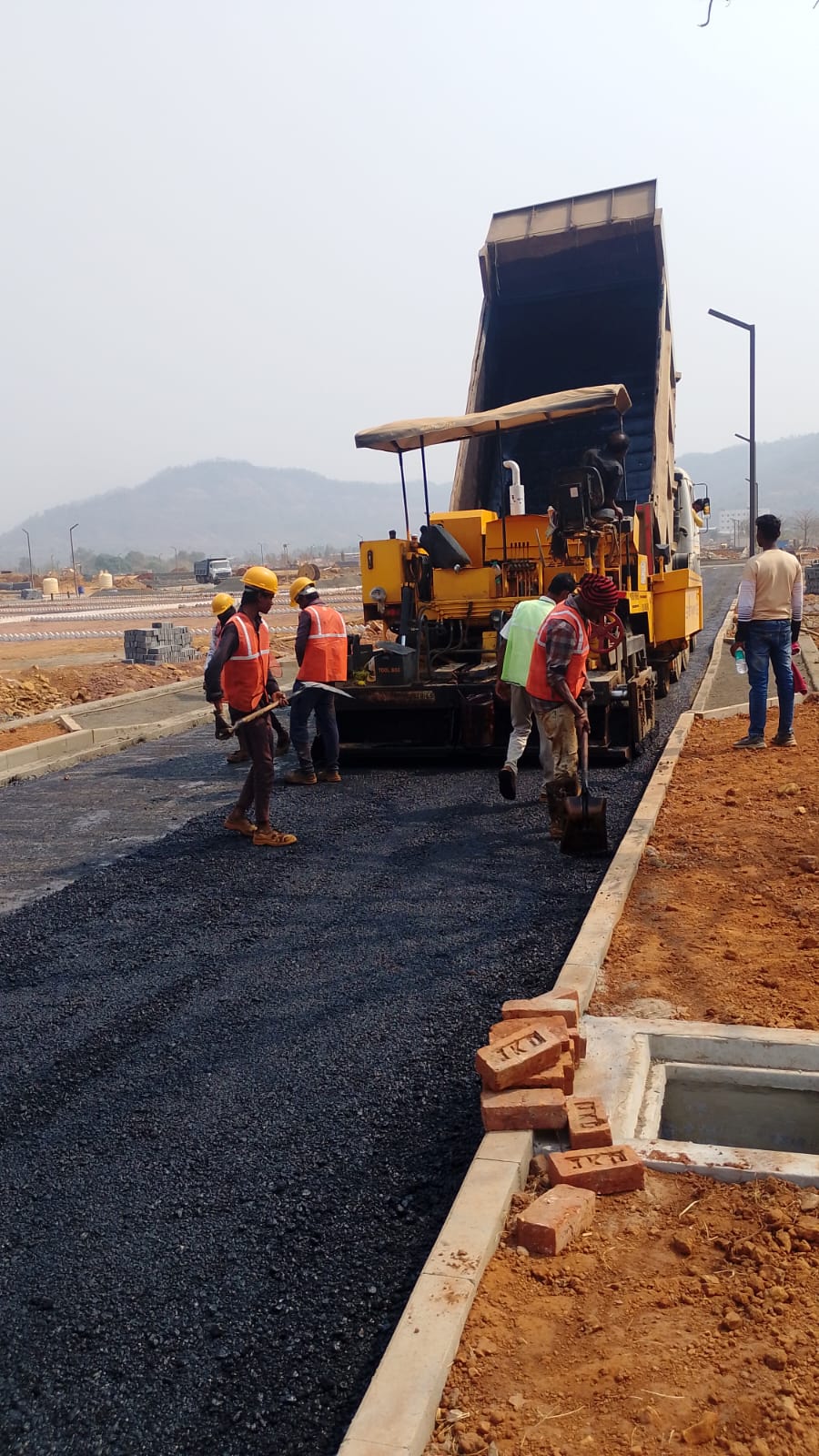
Asphalt / Bitumen Road Construction
Overview
Shreeyash Construction is a trusted asphalt / bitumen road contractor in Maharashtra, delivering flexible pavement solutions for highways, industrial roads, and township developments. Using advanced paver finishers, hot mix plants, and vibratory rollers, we ensure long-lasting, smooth, and durable asphalt surfaces.
From Khopoli, Raigad, Pune, Mumbai to Nashik, our road construction services focus on speed, quality control, and long-term performance.

Pavement Types
1. Flexible Pavements
- ✔ Made up of bituminous and granular layers that distribute traffic loads.
- ✔ Flexible structure — deforms under load but regains shape when unloaded.
- ✔ Includes subgrade, sub-base, base course, binder course & surface course.

2. Rigid Pavements with Bituminous Overlay
- ✔ Concrete base slab overlaid with a high-performance bituminous layer.
- ✔ Enhances ride quality, skid resistance & user comfort.
- ✔ Protects the rigid base from cracks, moisture & environmental damage.

Construction Methods
Hot Mix Asphalt (HMA)
Produced by heating asphalt binder & aggregates at 150–190°C.
- ✔ Suitable for high-traffic roads
- ✔ Requires high-precision QC
- ✔ Needs rapid compaction
Cold Mix Asphalt
Made using emulsified/cutback bitumen at normal temperature.
- ✔ Ideal for remote & rural areas
- ✔ Can be stockpiled for months
- ✔ Low energy consumption
Warm Mix Asphalt
Mixed at 100–140°C, saving energy and reducing emissions.
- ✔ Lower fuel cost
- ✔ Better workability
- ✔ Extended paving season
Bituminous Macadam (BM)
An open-graded base layer using large aggregates.
- ✔ Strong load distribution
- ✔ Common for base layers
- ✔ Used in rural/secondary roads
Penetration Macadam
Bitumen poured over compacted aggregates allowing penetration.
- ✔ Suitable for low-traffic roads
- ✔ Simple technique
- ✔ Minimal equipment needed
Materials Used
Bitumen Types
- ✔ 60/70, 80/100 penetration grade
- ✔ Modified Bitumen (PMB, CRMB)
- ✔ Cutback / Emulsified Bitumen
Aggregates
- ✔ Crushed stone
- ✔ Gravel for bases
- ✔ Well-graded clean sand
Filler Materials
- ✔ Stone dust
- ✔ Hydrated lime
- ✔ Cement (optional use)
Tack & Prime Coat
- ✔ Bitumen emulsions
- ✔ Cutback bitumen
- ✔ Ensures bonding between layers
Construction Techniques & Design Considerations
Engineered with precision to ensure durability, safety, and long-term performance.
Step-by-step execution methods followed during road construction.
Construction Techniques
Site Preparation
Excavation, clearing, grading & compaction of subgrade for a stable foundation.
Sub-base & Base Course
Granular layers (WBM/WMM) compacted to required density.
Application of Prime Coat
Promotes bonding between base and bituminous layers.
Binder Course
Intermediate layer distributing stress and loads effectively.
Tack Coat
Thin bitumen layer ensuring proper bonding before surfacing.
Surface Course
Final DBM/BC layer providing smoothness & skid resistance.
Compaction
Vibratory rollers achieve target density & remove air voids.
Essential engineering parameters that influence pavement design & performance.
Design Considerations
Traffic Load Analysis
ESAL calculations determine layer thickness based on expected traffic.
Climatic Conditions
Temperature & moisture influence material selection and pavement design.
Subgrade Strength
CBR test results guide foundation layer thickness.
Drainage Design
Proper slopes & drains prevent water damage and base deterioration.
Surface Slope & Camber
Ensures smooth drainage, safety & comfortable vehicle movement.
Material Performance
Selection based on durability, stability & environmental suitability.
Quality Control & Testing
Material Testing
Bitumen Testing
Penetration, ductility, softening point, viscosity, and flash point tests to ensure quality.
Aggregate Testing
Gradation, impact value, Los Angeles Abrasion (LAA), water absorption, and specific gravity tests.
Mix Design
Marshall Mix Design method or Superpave method to determine optimal mix proportions.
Field Tests
Density Testing
Nuclear density gauge or core samples to verify compaction meets specifications.
Core Cutting
Extraction of pavement cores to check layer thickness and bond between layers.
Surface Evenness
Straight edge or profilometer to measure surface regularity and riding comfort.
Compaction Testing
Temperature monitoring during compaction to ensure optimal rolling conditions.
Applications
National and State Highways
High-performance asphalt pavements designed for heavy traffic loads and high speeds, with multiple structural layers for durability.
Urban Roads and Expressways
Designed for moderate to high traffic volumes with special attention to noise reduction, drainage, and integration with urban infrastructure.
Industrial Roads
Heavy-duty asphalt pavements designed to withstand concentrated loads from industrial vehicles and equipment in manufacturing and logistics zones.
Airport Runways
Specialized high-strength asphalt pavements designed to withstand aircraft loads, with strict requirements for smoothness and durability.
Parking Lots
Asphalt surfaces designed for low-speed traffic with emphasis on proper drainage, marking visibility, and resistance to standing loads.
Need Expert Consultation?
Our team of experienced engineers can help you design and implement the perfect asphalt road solution for your specific requirements.